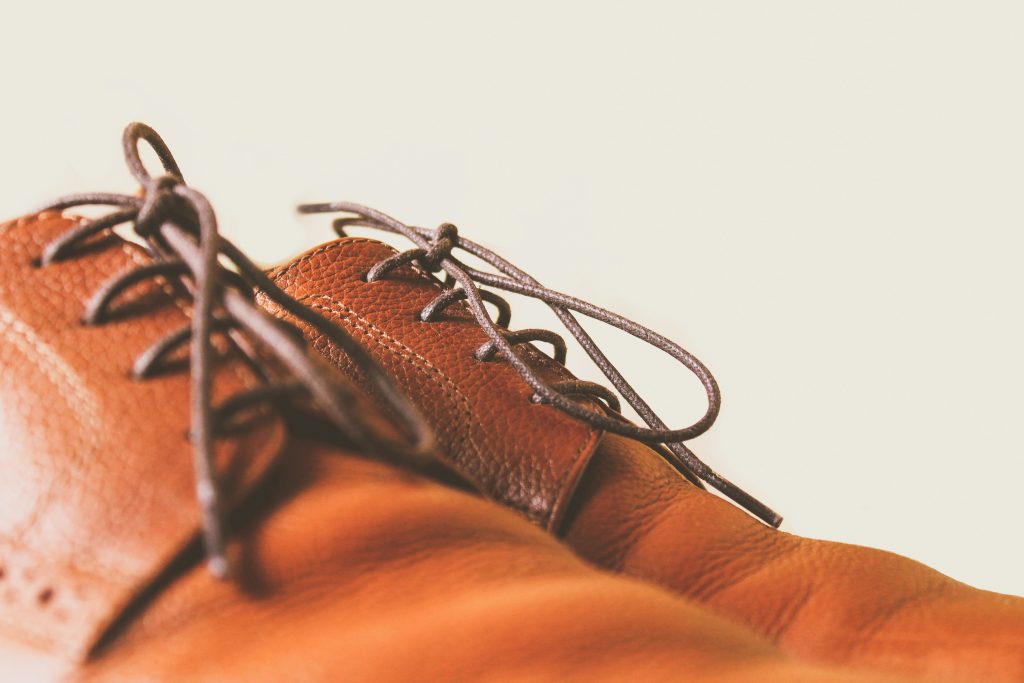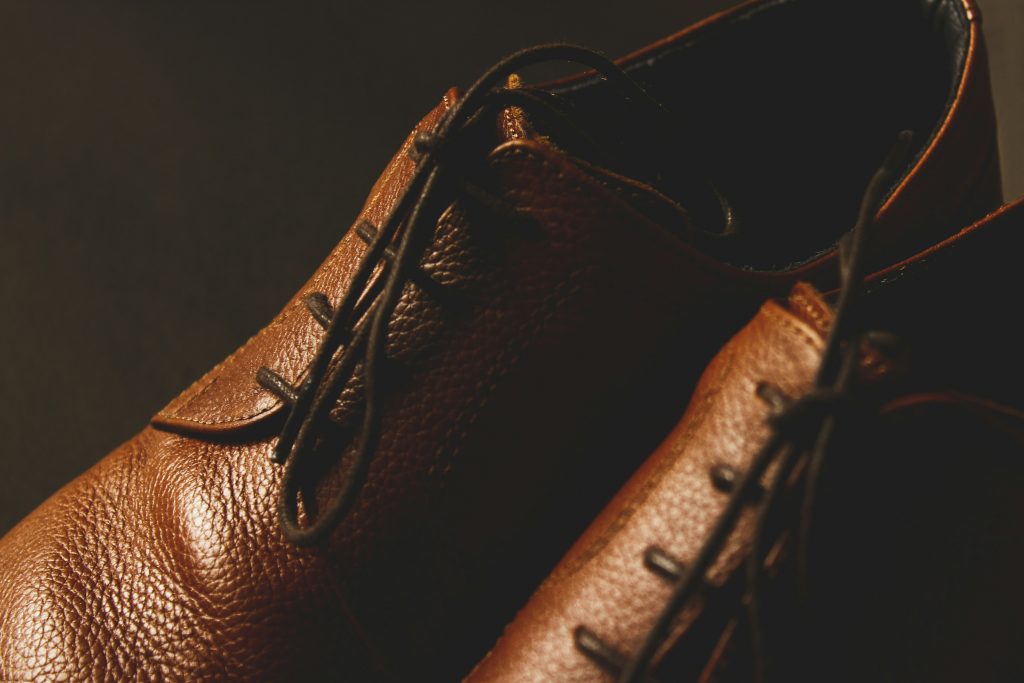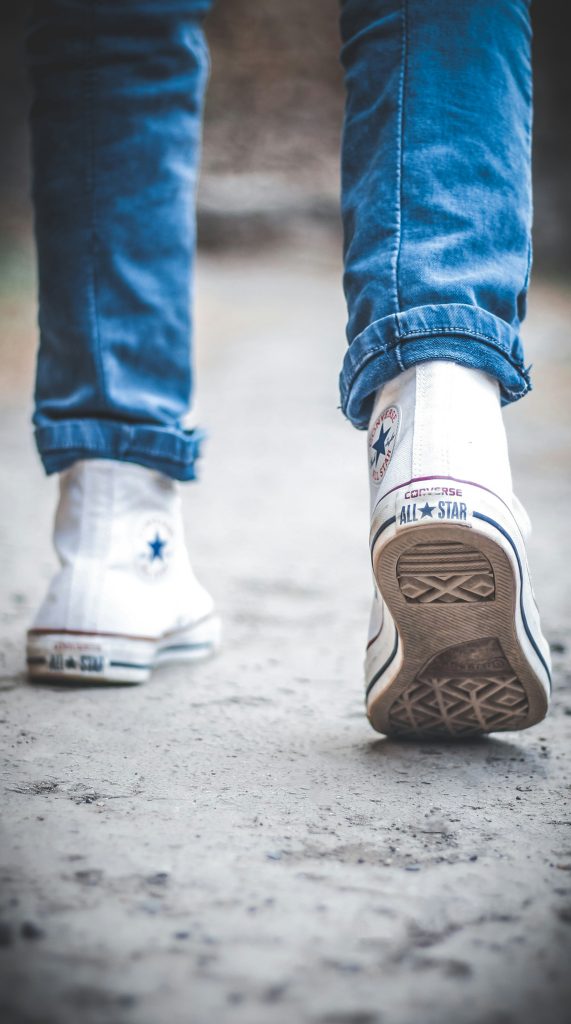You are about to embark on a journey into the world of sneaker boots and discover the unique lacing techniques that make them stand out from the crowd. From intricate patterns to functional designs, these lacing techniques not only enhance the aesthetics of your sneakers but also provide practical benefits. Whether you’re a sneaker enthusiast or simply looking for a stylish way to tie your shoes, this article will introduce you to the fascinating world of lacing techniques unique to sneaker boots. Get ready to elevate your sneaker game to a whole new level!

Lacing Techniques for Enhanced Stability
Criss-cross lacing
Criss-cross lacing is the classic lacing technique that provides a secure and stable fit for your sneaker boots. By crossing the laces over each other through the eyelets, this method ensures that they are evenly tightened and prevents any excessive movement of your feet inside the boots. It is suitable for most foot shapes and provides a balanced distribution of pressure along the length of the foot.
Ladder lacing
If you are looking for even more stability, ladder lacing is an excellent option. This technique involves creating a series of parallel lines across the eyelets, similar to the rungs of a ladder. By alternating the laces over and under these rungs, you can achieve a snug fit that minimizes foot movement. Ladder lacing is particularly effective for high-impact activities or when you need extra support.
Double-back lacing
For ultimate stability, consider using the double-back lacing technique. This method involves threading each lace through the adjacent eyelet and then doubling back to create a loop. By pulling the laces tightly through these loops, you can create a secure and locked-in fit. Double-back lacing is especially beneficial for individuals with wide feet or those who require maximum stability during intense physical activities.
Lacing Techniques for Improved Comfort
Straight bar lacing
Straight bar lacing is a simple yet effective technique for enhancing comfort in your sneaker boots. By running the laces straight across the eyelets, it helps to distribute pressure evenly across the upper of the boot. This can alleviate any discomfort caused by uneven pressure or tightness in specific areas, making your boots more comfortable to wear for extended periods.
Loop-back lacing
If you experience irritation or pressure on the top of your feet, loop-back lacing can provide relief. This method involves creating loops by running the laces through the eyelets and then back through the same side. By distributing the pressure more evenly, loop-back lacing can reduce the strain on the top of your feet, ensuring a more comfortable fit throughout the day.
Butterfly lacing
Butterfly lacing is a unique technique that offers both comfort and style. By creating a loop in the middle of the lace, around the midpoint of the boot, and then lacing the ends through opposite sides, you can achieve a snug fit without putting excessive pressure on the toes. This method is particularly beneficial if you have wide feet or if you want to add a touch of flair to your sneaker boots.
Lacing Techniques for Customized Fit
High-Arched Lacing
High-arched lacing is designed for individuals with high arches and helps to provide additional support and cushioning in the midfoot area. This technique involves skipping some eyelets near the arch of the foot, allowing the laces to wrap snugly around the sides of the foot and provide targeted support where it is needed the most.
Wide-Foot Lacing
For those with wider feet, wide-foot lacing can create a more accommodating fit. This technique involves skipping a few eyelets closer to the toes and lacing the remaining eyelets towards the top of the boot. By allowing more space in the toe box area, wide-foot lacing reduces pressure and provides a more comfortable fit for individuals with wider feet.
Narrow-Foot Lacing
On the other hand, if you have narrow feet, narrow-foot lacing can help prevent slippage and ensure a secure fit. This method involves lacing the laces tighter and closer together, focusing the tightening around the middle and top of the boot. Narrow-foot lacing helps to minimize excess movement within the boots, providing a customized fit for individuals with narrower feet.
Lacing Techniques for Style and Aesthetics
Spider Web lacing
Spider web lacing is a visually appealing technique that adds a unique touch to your sneaker boots. By creating a web-like pattern with the laces, you can enhance the aesthetics of your boots and make them stand out from the crowd. This lacing technique is perfect for those who want to add a bit of creativity and style to their footwear.
Checkerboard lacing
If you prefer a more symmetrical and orderly look, checkerboard lacing is an excellent choice. This technique involves weaving the laces over and under each other diagonally, creating a checkered pattern. Checkerboard lacing adds a clean and polished appearance to your sneaker boots, making them suitable for both casual and formal occasions.
Zipper lacing
For a sleek and modern look, zipper lacing is a great option. This lacing technique involves threading the laces through the eyelets in a zigzag pattern, resembling a zipper. This not only adds a stylish touch but also creates a snug fit that keeps your feet secure and comfortable throughout the day.

Lacing Techniques for Quick Adjustment
Speed lacing
If you are always on the go and need to quickly adjust your laces, speed lacing is the perfect solution. This technique involves running the laces straight through the eyelets, leaving the excess lace at the top. By simply pulling the laces tight and securing them with a knot, you can save time and easily adjust the tightness of your sneaker boots whenever necessary.
Quick-pull lacing
Similarly, quick-pull lacing offers a convenient way to adjust your laces with minimal effort. This method involves using special locking mechanisms attached to the laces that allow you to quickly tighten or loosen the laces by simply pulling on them. Quick-pull lacing is ideal for outdoor activities or when you need to quickly adapt the fit of your boots on the go.
Slip-on lacing
If you prefer the convenience of slip-on boots but still want to enjoy the benefits of laces, slip-on lacing is the right choice for you. This technique involves leaving the laces loosely tied and utilizing the elasticity of the laces to easily slip your feet in and out of the boots. Slip-on lacing provides a combination of comfort and practicality, making them a popular choice for everyday wear.
Lacing Techniques for Outdoor Activities
Lock lacing
Lock lacing is a technique specifically designed for outdoor enthusiasts who engage in rugged activities such as hiking or trail running. This method involves creating a loop with the laces around the ankle, followed by threading each lace through the loop on the opposite side. By pulling the laces tight and securing them with a double knot, lock lacing provides excellent ankle support and prevents the boots from loosening during intense outdoor activities.
Runner’s loop lacing
Runner’s loop lacing is another technique that caters to the needs of active individuals. This method involves creating an extra loop near the ankle to reduce friction and pressure points. By wrapping the lace around the ankle and threading it through the loop, you can achieve a secure fit that minimizes discomfort and prevents slippage, allowing you to focus on your performance.
Trail lacing
Trail lacing is a versatile technique suitable for off-road adventures. This method involves lacing your boots normally until reaching the midfoot, and then switching to diagonal lacing towards the top. Trail lacing enhances the stability and support of your boots, particularly on uneven terrain, by providing an additional layer of lateral support. It is an excellent choice for hiking or trail running, ensuring that your feet are protected and comfortable throughout your outdoor activities.

Lacing Techniques for Sneaker Boot Variations
High-top lacing
High-top lacing is specifically designed for sneaker boots with a high-top design that extends above the ankle. This technique involves lacing the boots all the way up to the top eyelets, providing maximum ankle support and stability. High-top lacing is particularly beneficial for individuals who require extra support during physical activities or individuals with weak ankles.
Mid-top lacing
For sneaker boots with a mid-top design, mid-top lacing offers a balance between ankle support and mobility. This technique involves lacing the boots until the eyelets below the ankle, allowing for greater freedom of movement while still providing adequate support to the ankles. Mid-top lacing is suitable for individuals who participate in activities that require both agility and ankle stability.
Low-top lacing
Low-top lacing is ideal for sneaker boots with a low-top design, providing the most freedom of movement for your ankles. This technique involves lacing the boots only up to the lower eyelets, offering unrestricted mobility while still securing the boots to your feet. Low-top lacing is suitable for casual wear or activities that require minimal ankle support, allowing for maximum comfort and versatility.
Lacing Techniques for Injury Prevention
Heel lock lacing
Heel lock lacing, also known as “lace locking,” is an effective technique for preventing heel slippage in your sneaker boots. This method involves creating a loop with each lace on the opposite side near the ankle and then crossing the laces through these loops. By pulling the laces tight, you can create a secure lock around the heel, preventing any unwanted movement that may cause blisters or discomfort during physical activities.
Arch support lacing
If you require additional arch support, arch support lacing can help alleviate discomfort and prevent overpronation. This technique involves skipping some eyelets near the arch of the foot and lacing the remaining eyelets towards the top of the boot. By allowing the laces to wrap snugly around the sides of the foot, arch support lacing provides targeted support and helps maintain the natural alignment of the foot.
Seamless lacing
Seamless lacing is a technique that minimizes pressure points and friction, reducing the risk of blisters and irritations. This method involves lacing the boots in such a way that the laces do not cross over the sensitive areas of the foot, such as the toes or the top of the foot. By avoiding any overlapping or excessive pressure, seamless lacing ensures a smoother and more comfortable fit, preventing common foot injuries associated with friction and pressure.
Lacing Techniques for Slip-Resistance
Toe lock lacing
Toe lock lacing is an effective technique for preventing your feet from sliding forward within the boots, especially during downhill descents. This method involves creating a loop with each lace near the bottom eyelets and then crossing the laces through these loops before tightening them. By pulling the laces tight, you can create a secure lock around the toes, preventing any unnecessary movement and providing a more stable and slip-resistant fit.
Under-over lacing
Under-over lacing is a technique that can provide extra grip and prevent your feet from slipping inside the boots. This method involves alternating the laces over and under each other through the eyelets, creating a series of diagonal lines. This criss-cross pattern helps to secure your feet in place and maintain stability, reducing the risk of slipping or sliding particularly in slippery or uneven terrain.
Double helix lacing
Double helix lacing is an innovative technique that adds extra friction and grip to your sneaker boots. This method involves looping the laces around each eyelet twice in a spiral pattern, resembling a double helix DNA structure. By increasing the contact between the laces and the eyelets, double helix lacing ensures a secure fit and enhances the overall slip-resistance of your boots, making them suitable for challenging outdoor environments.
Lacing Techniques for Specialized Sneaker Boots
Steel toe lacing
Steel toe lacing is specifically designed for sneaker boots with steel toe caps, providing additional support and protection for your toes. This technique involves lacing the boots normally until reaching the eyelets near the toe area, and then crossing the laces securely over the steel toe caps. By ensuring that the laces are tightly secured around the toe area, steel toe lacing enhances the safety features of your boots, making them suitable for industrial or construction environments.
Insulated lacing
Insulated lacing is a technique that ensures proper insulation and warmth during cold weather conditions. This method involves tightening the laces more firmly around the foot and ankle, creating a snug fit that helps to retain heat. By minimizing the space inside the boots, insulated lacing prevents cold air from entering and keeps your feet warm and cozy, making them perfect for winter activities or snowy expeditions.
Waterproof lacing
For sneaker boots with waterproof features, waterproof lacing is essential to maintain the integrity of the boots. This technique involves starting the lacing from the second eyelet, ensuring that the laces are secured tightly around the ankle. By minimizing the exposure of the laces to water or moisture, waterproof lacing prevents water from seeping into the boots, keeping your feet dry and comfortable even in wet conditions.
In conclusion, the right lacing technique can greatly enhance the comfort, stability, and overall performance of your sneaker boots. Whether you are looking for improved comfort, customized fit, style, quick adjustment, outdoor functionality, injury prevention, slip-resistance, or specialized features, there is a lacing technique suited for your needs. Experiment with these different methods to find the one that provides the perfect combination of fit, support, and style for your unique feet and activities. Happy lacing!


